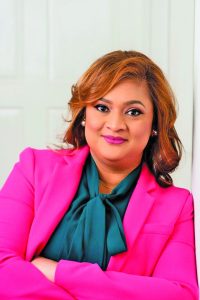The extent of learning loss through the pandemic is being measured now that schools have fully reopened, and the Education Ministry is contemplating continuing classroom activity during the months of July and August to counter worrying trends.
Education Minister Priya Manickchand communicated on Tuesday that schools across the country are physically prepared to accommodate students. Since last Monday, normal class activities resumed after getting the greenlight from officials.
Upon visiting some institutions, the Minister said some worrying scenarios were detected, pointing to significant learning loss. The reopening has provided an environment for authorities to gauge the degree of learning loss suffered during the two years of closure.
“We’re ready physically for the students to come back to school. What I am seeing, and this is just cursory glances at what’s happening, is that two nursery students couldn’t identify letters and sound out the short vowel sounds. That’s very worrying. At this point, the third term in year two, they should be reading. These kids are going into Grade One,” Manickchand outlined.

Priya Manickchand











